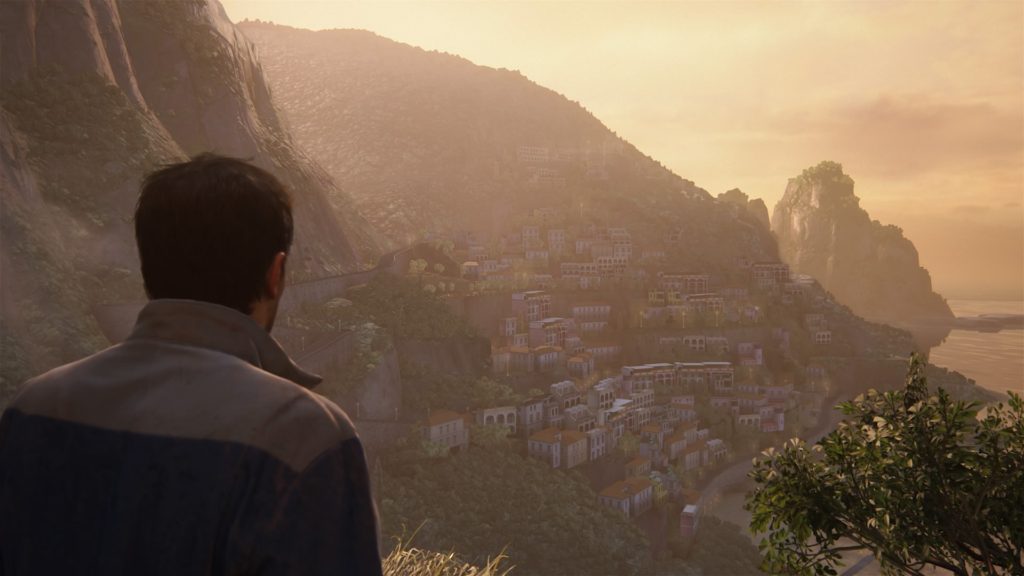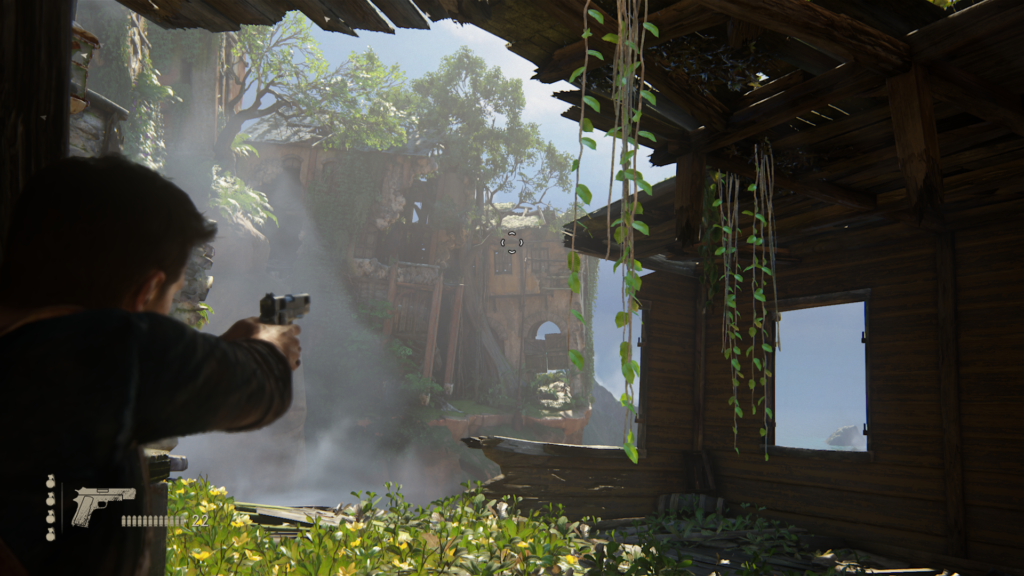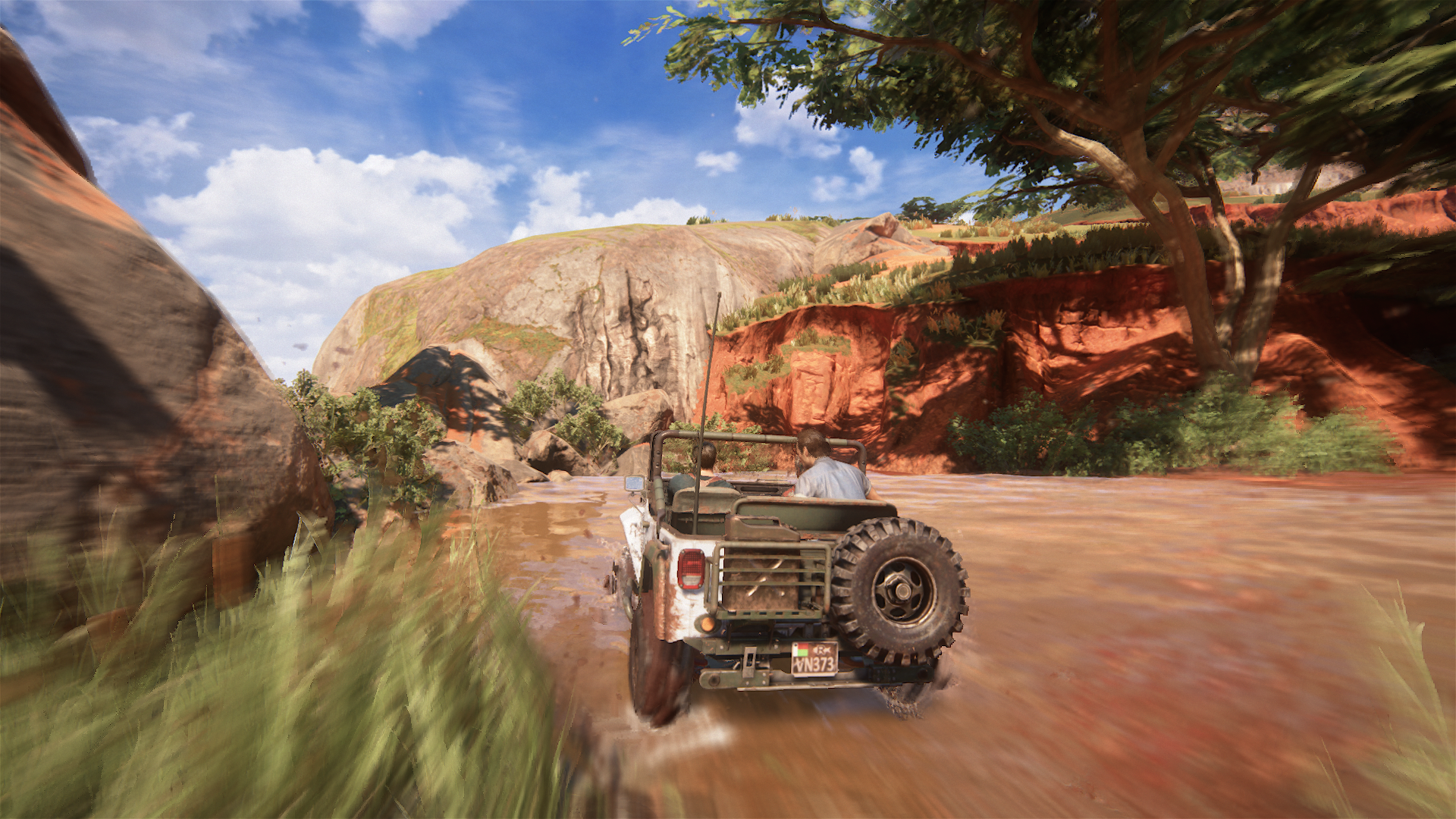Developed by: Naughty Dog
Released: May 10, 2016
Price: $59.99 (PS4)
A Thief’s End is the closing chapter of Naughty Dog’s beloved Uncharted franchise, a sort of Tomb-Raider-meets-Indiana-Jones action adventure series. The series began with Uncharted: Drake’s Fortune, released for PS3 in 2007 (about a year after the PS3 itself was released). It follows the story of Nathan Drake, long lost heir of Sir Francis Drake, and was lauded for its cinematic style and high quality production and presentation.
Nine years, three sequels, and one Vita prequel later, the story of Nathan Drake and his companions finally comes to a close. A Thief’s End is not only a stellar title in it’s own right, but also an indication of the refinement that Naughty Dog has been able to apply to the Uncharted formula over the years. Let’s break it down into our categories.
Art and Story
The Uncharted series has always been loved for its captivating settings and characters. A Thief’s End takes each of these to a new level, taking it’s time to indulge in flashbacks and more narrative-based sequences to deliver a measured pace and some in-depth characterization. The story follows Nathan Drake and his brother Sam Drake, newly introduced to the series, who pulls Nate out of his peaceful domestic life for one last big adventure. It has all the standard hero’s journey trappings, and takes it’s time establishing its introduction before hurling the player into gunfights.
I wouldn’t want to go into too much detail about the story, because part of the fun is discovery. I can say, however, that it features flashbacks similar to that of Uncharted 3, which help explain Sam and Nate’s childhood and establish their relationship. The story is wonderfully paced and the flashbacks lend it a sort of epic scope, as it spans across the lives of its characters. The story has more thematic consistency than in the previous titles, made stronger by the fact that the game actually examines the thrill-seeking nature of Nate’s exploits and its inherent dangers. It’s not heavy-handed or brooding, but it is a bit more thoughtful and it expresses this in ways that make sense for the narrative and the characters. While the story builds off of the introduction of new characters, it’s bolstered by the inclusion of Elena and Sully, favorites from the original cast that continue to entertain and delight.

And now, scenery. It pretty much goes without saying that the environments are absolutely beautiful. The Uncharted series has already established its ability to deliver on polish and attention to detail, but this title still manages to outdo itself. Environments are vivid, detailed, and complemented with gorgeous backdrops and lighting. Nate and Sam’s adventure takes them to a variety of awesome locations and, though the game is still very linear, includes spaces that are more explorable and open than those of previous games.
Environments are also dynamic, so look forward to Nate breaking many of the rickety bridges and ledges he steps on or grabs. Frankly, there’s so much to love about the scenery that I think the screenshots basically speak for themselves, even with me being careful not to show too much.
Interface
On the whole, Uncharted 4′s feel and controls are virtually identical to previous games, aside from slightly refined climbing and cover mechanics and a couple of new climbing gadgets. There’s really not much to talk about here; it plays like a cover shooter during gunfights, and like an Assassin’s Creed title during climbing sequences.
New to the series are some unlockable silly render modes (which change color palettes, turn things black and white, make things look pixel-y, and so on) as well as more accessibility options that make the game a little easier to play if smashing buttons repeatedly isn’t your forte. Uncharted 4 also includes an interesting “camera mode” feature that allows players to pause the game and move the camera around to take interesting screenshots, presumably as another way to appreciate the game’s environments. All these little touches solidify that nice veneer of polish that we expect from Uncharted titles.

Gameplay
As expected from the series, gameplay consists primarily of three separate activities: exploring and investigating, combat, and climbing and traversal. Each of these seems to be a refined version of those of the previous titles.
Climbing and traversal have been subtly improved, allowing players to control Drake more precisely as he reaches out before leaping and swinging dangerously towards his destination. Controls can get a little bit finicky because of this, but it’s rarely noticeable. Drake also acquires a couple of new gadgets that make for more interesting traversal (these feel like they take a page from the recent Tomb Raider titles). That said, there is a fair amount of traversal, probably a bit more than previous titles. If previous games had too much of it for you, this might be worse yet.
There’s also periodic vehicle sections, in which you’ll use a jeep or a boat to explore a wider area, or engage in desperate chase scenes. Vehicles pretty much work as expected and these sections are cool because of the amount of ground you can cover and explore.
Firefights feel pretty similar to the previous titles, but seem to have a more consistent difficulty and more useful ammo placement. There is a reasonable variety of weapons to experiment with and environments are peppered with interesting bits of cover. Enemies sometimes seem clever and try to flank you, and at other times they just stay still and shoot at you forever, but on the whole the combat tends to create some interesting challenges.

New to the series is a more precise stealth mechanic, complete with tall grass and awareness indicators. Thanks to these changes, stealth tactics seem more viable than in previous titles. Not only can players take out a number of enemies before the whole group is alerted, but there are also particular areas in which it’s possible to sneak back into hiding after firing a few shots. These mechanics are not particularly fleshed out, but they do provide a bit more variety to the combat that encourages different approaches.
Pacing in A Thief’s End is more narrative-heavy than previous Uncharted titles, more closely resembling that of The Last of Us (Naughty Dog’s similarly narrative-heavy zombie title). Tense action sequences interchange frequently with quieter sequences of exploration and dialogue. These usually take place in the context of exploring an environment or solving puzzles to work ancient contraptions. As a result, the game is able to deliver a lot more dialogue between characters that fleshes out backstories and relationships. This dialogue is not unlike the banter between Sully and Nate in previous titles, but it feels more detailed and has more room to breathe this time around.
Content
As stated in the title, this review covers only the single player campaign. I have not tried any of the multiplayer, so I can’t speak to the quality or replay value of it. The single player experience, however, is the richest yet of the Uncharted series. Compared to previous games, A Thief’s End is easily of comparable length (if not the longest) and packed with treasures to find and special bits of dialogue to trigger. Not only does Nate and Sam’s story take them all over the world, it also takes its time narratively. Outside of a brief action scene at the very beginning that gets the ball rolling, Uncharted 4 has more careful and measured setup than previous titles (which just threw you into the adventure with a couple of cutscenes).
Collectibles are here in full force with the usual list of treasures (quite a few this time) as well as journal entries (which are found by investigating interesting parts of the scenery) and optional conversations. All of these make a strong case for revisiting chapters where you missed something.

Overall Impression
It’s pretty easy to figure out who will like Uncharted 4. It’s everything it’s prequels were but with a little bit more in every way. Gameplay is refined, storytelling is expanded and fleshed out, and the scenery is prettier than ever. In general, anyone who already liked the series will adore this one. If you already disliked the Uncharted series, then A Thief’s End is unlikely to change your mind. The pacing is a little slower, so I suppose it’s possible that shooter fans who played the previous titles might be bored by this one, but for the most part I think the fanbase will remain static.
Of course, there’s still one more group of people: those who never had a chance to play an Uncharted title before. This one’s tricky: I think A Thief’s End holds up pretty well on its own, but it also gains a lot of its charm from characters and past events that the player is already familiar with. If you haven’t played an Uncharted game (but you have a PS4), then I highly recommend getting the 1-3 collection and playing those first; I think you’ll be glad you did. The previous titles still hold up very well, and each have great stories in their own right. If that’s too much of a commitment though, then I think newcomers will still be able to find a lot to love in A Thief’s End.
